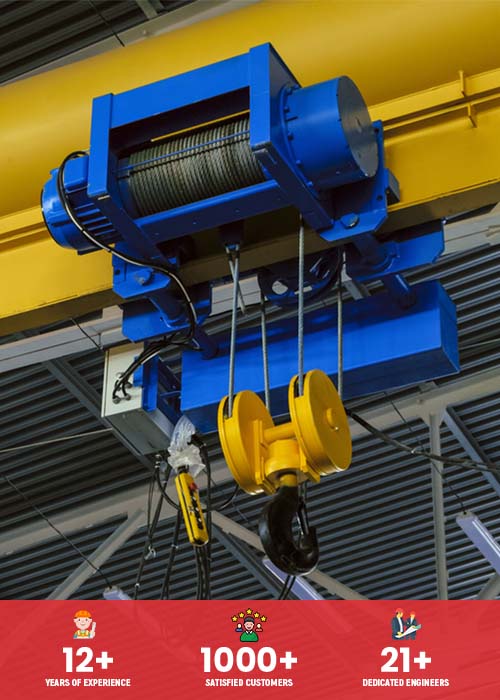Top 5 Criteria for Selecting the Ideal Crane and Hoist Equipment for Industrial Applications
Choosing the right crane and hoist equipment is crucial for ensuring safety, efficiency, and productivity in your Indian industrial facility. With a vast array of hoist crane manufacturers in India offering various options, selecting the ideal equipment can be overwhelming. This guide simplifies the process by outlining the top 5 criteria you need to consider
Understanding Your Needs:
Load Capacity:
This is the most crucial factor. Identify the heaviest load you plan to lift and add a 10-15% buffer for unforeseen situations. According to the Indian Steel Association, the Indian steel sector alone produced over 118 million tonnes of crude steel in 2023, highlighting the need for robust cranes in numerous industries.
Lift Height and Reach:
Determine the maximum vertical distance (lift height) and horizontal coverage (reach) required for your lifting operations. Consider future expansion plans that might necessitate a larger range of movement.
Frequency of Use:
Cranes are categorized based on duty cycle, which refers to the percentage of time the crane is operational in a given period. Here’s a breakdown to help you choose:
Light Duty (Class A):
Up to 20% usage, ideal for occasional lifting tasks.
Moderate Duty (Class B):
20-40% usage, suitable for regular lifting in production environments.
Heavy Duty (Class C):
40-50% usage, designed for frequent lifting of moderately heavy loads.
Severe Duty (Class D):
Over 50% usage, ideal for continuous lifting operations in demanding environments.

Facility and Application Considerations:
Building Infrastructure:
Evaluate your building’s ceiling height, support structures, and available space for crane installation. Ensure your chosen crane’s weight doesn’t exceed the building’s load-bearing capacity.
Work Area Layout:
Identify any potential obstructions in the workspace, such as pillars, machinery, or uneven floors. The crane’s movement shouldn’t be hindered by these obstacles.
Specific Industry Requirements: Consider factors specific to your industry. For instance, if you work in a food processing plant, you might need a crane made from corrosion-resistant materials to withstand frequent washdowns. Similarly, explosive environments might necessitate specialized cranes with explosion-proof features.
Hoist Selection:
The hoist is the lifting mechanism attached to the crane. Here’s what to consider:
Power Source:
Choose between electric hoists, the most common and versatile option, or manual hoists (chain or ratchet) for lighter loads and situations with limited power access. Pneumatic hoists are another option for specific applications.
Hoist Line Material:
The line material, typically wire rope or chain, should be chosen based on weight capacity and durability. Wire rope offers superior strength for heavy loads, while chain hoists are more compact and cost-effective for lighter loads.
Lift Speed:
Select a hoist speed that optimizes your workflow. Consider the weight of the load and the frequency of lifting cycles. While faster speeds can increase productivity, they might not be necessary for all applications.
Additional Considerations:
Safety Features:
Prioritize safety by ensuring your chosen crane and hoist have essential features like overload protection, limit switches to prevent overtravel, and emergency stop systems. Always adhere to Bureau of Indian Standards (BIS) regulations for crane and hoist operations in India.
Maintenance and After-Sales Service: A reliable after-sales service network is crucial for prompt repairs, maintenance support, and readily available spare parts. Choose a hoist crane manufacturer in India with a well-established service network across the country.
Cost and Budget:
While cost is a factor, prioritize safety, reliability, and equipment performance over the initial price tag. Look for a balance between affordability and long-term value. Research average crane prices in India for your desired capacity and features to set realistic budget expectations.
User Experience and Training:
Operator comfort and ease of use play a significant role in overall productivity and safety. Look for cranes and hoists with ergonomic controls, clear operator interfaces, and features that minimize operator fatigue.
Invest in comprehensive operator training to ensure proper usage of the equipment, adherence to safety protocols, and identification of potential hazards.
pen spark



